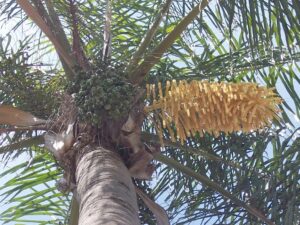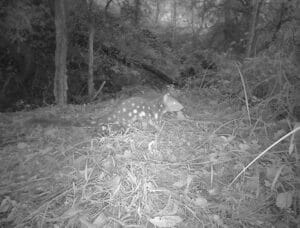Introduction – What is a paddock tree?
The name says it all – a tree, usually a large one, isolated in the middle of a paddock – one of the last remnants of the original forests that covered the land. Although generally alone in the landscape, a paddock tree may also have a few smaller trees clustered around it, or even be in the middle of a small patch of bush or scrub. The early Europeans who cleared vast areas for farmland 100-150 years ago generally left a few of the larger trees for shade, these trees may have been hundreds of years old already, and they are the last of their kind across our modern day agricultural landscape.
The importance of paddock trees to both the agricultural and natural environment cannot be underestimated. They are keystone features in the landscape and their ecological importance is disproportionately large compared to their numbers and area of cover. Studies have shown that even a small increase in the number of trees in an agricultural landscape markedly increases the number of species present.
What Does a Paddock Tree Contribute? – Agriculture Vs. Natural Environment
From an agricultural perspective, paddock trees provide a range of important benefits:
- Providing shade and shelter for livestock, thus improving survival rates, and lowering heat and cold stress, resulting in improved yield
- Providing shelter for crops and pastures, reducing evaporation and wind buffeting
- Stabilising the soil with their roots and preventing erosion
- Removing excess groundwater to prevent and remedy waterlogging and salinity
- Recycling nutrients deep in the soil to prevent soil acidification
- Storing carbon and nitrogen
- Improving the moisture holding capability of the soil by contributing organic matter
- Acting as a harbour for insect pest control agents such as birds, reptiles, bats and parasitic insects
- Stabilising farm waterways by holding and using rainwater
- Acting as an indicator of the health of the land
- Improving the overall appearance and value of the land for recreation, tourism and resale value.
From an environmental perspective, the benefits of paddock trees are even greater, providing many important ecological functions and influencing plant and animal life both at a local scale and across the landscape.
Studies have shown that a cooler and wetter microclimate may exist under a given tree due to the concentration of shade and rainfall which is directed towards the ground by the leaves. Water uptake through the root system, and increased infiltration of water into the soil surface can enhance the concentration of soil moisture around the tree, whilst a collection of leaf litter and organic matter will cool the ground and reduce evaporation. Nutrient levels can also be enhanced by this leaf litter, as well as animal manures and the accumulation of nutrients by tree roots. Symbiotic relationships exist between trees and bacteria and fungi, fixing nitrogen in the soil and making it accessible to plants. This microclimate can host a variety of flora and fauna that do not exist outside the range of the paddock tree.
Scattered paddock trees also represent the original Pre-European vegetation, therefore providing important conservation opportunities by acting as a source of seed either directly from the tree, or indirectly by seeds deposited elsewhere by birds and bats. These trees can also act as nurseries by providing favourable conditions for the germination and growth of other plants.
A wide range of animals make use of paddock trees for habitat, including a variety of birds, insectivorous bats, reptiles, mammals, frogs, and invertebrates. They will make use of hollows, branches, leaves, cracks in the trunk and the bark, for breeding, shelter and nesting, and studies have shown the presence of a single tree can double the number of bird species. Hollows can take 50-100 years to develop (depending on the species of tree) and cannot be replaced quickly by planting new trees.
Not only is the paddock tree a valuable source of food itself, through the leaves, flowers, pollen, fruit, bark and roots, but the animals, birds and invertebrates that live in and around the tree are in turn a source of food for other predators. Leaf eating animals such as possums, gliders, and koalas need a range of trees to choose from.
In addition to providing hollows, paddock trees provide nesting and roosting sites for a large range of birds. Often the tallest tree in the vicinity, they are used extensively by birds searching for prey in the paddocks. A birdseye view to be sure! Many birds such as owls and insectivorous species are also beneficial to farmers.
Wildlife relies on the ability to continually move through the landscape, seasonally as well as daily, sometimes over long distances, for purposes of feeding, breeding, nesting, avoiding predators, escaping threats and finding new territories. The ability to safely move across the landscape is integral to maintaining a strong population through increased reproduction and high survival rates. Connectivity is crucial for a well functioning and more resilient ecosystem.
The fragmentation of the landscape through land clearing, agriculture, development, roads, homes and fences threatens this connectivity and fragments the landscape, reducing the ability of wildlife to move. These paddock trees provide important “stepping stones” across the agricultural landscape, for wildlife on the move between areas of remnant vegetation. An important feature of landscapes characterised by scattered trees is that the connectivity remains relatively high for some animals. Koalas in particular make use of paddock trees, during breeding season and as part of their home range. A recent study by researchers from the University of Sydney used tracking collars on koalas to trace their movements across the agricultural landscape. They found koalas took great risks to cross cleared land to repeatedly visit paddock trees. These farmlands were originally chosen due to their soil fertility and water, resulting in paddock trees which are rich in nitrogen. The study showed koalas stayed longer in these trees than they did in other trees. This study demonstrated the importance of paddock trees and the need to reconnect them to nearby bushland.
Tune in next month for information on the current state of our paddock trees on the Mid Coast, and what we are doing to help.
If you are a landowner in the MidCoast area, and you think you have a paddock tree suitable for the project, please complete an Expression of Interest form which can be found here:
https://docs.google.com/…/1FAIpQLSe_Iorf2DsrEl66TQ…/viewform
Contact: Project Officer – Lauren Booth – lauren@midcoast2topslandcare.org or phone: 0402 131 674.




